|
Our silver fern design will feature in a tribute to the ANZACs, The Silver Fern has been used as a distinctive marker of New Zealand troops since the 19th century. 25 April 2017 marks the anniversary of the Australian and New Zealand Army Corps landings on the Gallipoli Peninsula. On this important day, millions of Australians and New Zealanders will honour their fallen in commemorations worldwide. Lifewear approached us for a licence to use our fern design on their shirts, and we are proud to be part of their commemorative ANZAC shirts. This fully printed polo is a tribute to all men and women who served New Zealand. It is of a respectful style with traditional fold-over collar, A timeless profile and modern generous fit. This polo keeps the wearer cool and dry, and the lightweight AirCool fabric offers sun protection and creates a soft mesh-like feel that ensures breathability. The shirts are available at Lifewear We honour those who made the ultimate sacrifice, now in far-off fields, their final resting places marked by the Silver Fern.
LEST WE FORGET
1 Comment
The Christchurch United Football Club wanted something uniquely New Zealand on their jerseys, and chose our Silver Fern Flag design to feature on their new uniforms. For those living in Christchurch, do go and check out Christchurch United's state-of-the art artificial pitches, top quality natural pitches, fit-for-purpose floodlights, and a 500-seat grandstand which will soon be flanked by new offices, changing rooms and a café that will create the best year-round football environment for players, parents and supporters. Christchurch United FC has set itself extremely high standards to deliver a world-class football experience, both on and off the pitch, from their elite players, to the First Kicks toddlers and weekend warriors battling in the masters grades. Over the years Silver Fern Flag has licensed the design to many proud kiwi non-profits and companies – including Rocket Lab, who will soon launch from Mahia – revolutionary new rockets carrying our silver fern design, and satellites into space. We have also licenced the New Zealand Elite Triathlon Team to use our fern and are more than happy to licence our design to all kiwi sports teams, not just the elite ones. For more on licensing | silverfernflag.org/licence Info on Christchurch United | cufc.co.nz silverfernflag.org New recruits Juan Chang, (Guatemala) and Colin van Gool (Netherlands) model the new jersey, with coach Fernando Lambert. - Photo CUFC
Prime Minister Bill English has revealed he voted for the flag change, but says John Key's failed referendum on this issue showed the perils of politicians rather than people trying to drive change. It is the first time English has revealed how he voted in the flag referendums. He had refused to give his view at the time because he was in charge of the referendum process. Now he is Prime Minister, English said the flag referendum showed constitutional changes such as the flag or a move toward a republic should not be led by politicians. "That is the lesson from the flag referendum. I oversaw the process for changing the flag, I voted for changing the flag. In the end, a lot of the voting became a bit of a political vehicle, probably because it was proposed by the Prime Minister. "So I think in future that constitutional change needs to come from the will of the people." He said that would apply to any move to become a republic as well.
English was speaking to the Herald in London, where he also discussed his views on republicanism. English said he did not New Zealand to become a republic even after the reign of Queen Elizabeth. That is the time when many believe the issue will be debated in countries such as New Zealand and Australia. He believed that "people would generally support the monarchy and its continuation." Although English missed out on meeting the Queen on this trip because of her recent illness, he said he had met her in the past and hoped to do so again in his role of Prime Minister. She had also sent a Christmas card to him after he became PM. He said the monarchy was a "practical arrangement" that had worked for New Zealand and there was high respect for the Queen. He also believed the upheavals of the Brexit vote would be good for the monarchy. "I think it does [help]. Part of the strength of it has been it is a point of stability in changing times and that is particularly obvious now." He said he was a monarchist. "I support the monarchy. I've looked at the arguments for a republic, but I think in the long run it's important that important constitutional change comes from the people - so bottom up rather than top down. English has previously said he was a monarchist - although he has joked that it would be difficult to be as enthusiastic about it as Key was. Key had visited Balmoral and had several meetings with the Queen, including once promising to advocate for her in the Commonwealth for changes to the rules of succession to allow daughters to be treated the same as male heirs. Claire Trevett, NZ Herald http://m.nzherald.co.nz/nz/news/article.cfm?c_id=1&objectid=11782748 Flags fly in Harington Point, including a red version of Kyle Lockwood’s silver fern flag (foreground) and the New Zealand Red Ensign (right).
Flags, flags everywhere. Shawn McAvinue asks why so many residents in a small settlement at the northeastern end of Otago Peninsula are flying flags. Harington Point crib owner Don Shanks said the flying of flags just "evolved" in the "tight-knit community". "It’s amazing how it evolved. Everyone got on board. We didn’t have meetings about it, they just popped up." The Shanks crib on Harington Point Rd had been in the family since 1957. It was not known when the flag pole was put on the crib shed, but a photo taken of a sea lion on the beach in 1973 showed it was there then. "If it is the first one, I could not tell you." He owned nine flags. "From Hawaiian, to Scottish, to happy faces — a whole array." When someone died in the community, New Zealand flags were flown at half-mast across Harington Point. The flags were flown at half-mast when his brother Roy Shanks died in December 2015 and when his wife Moira Shanks died in May last year. The flags were also lowered when local, Matenga "Marty" Taiaroa died on a fishing boat when sailing from the West Coast to Dunedin in February last year. "The flags were lowered to half-mast in respect. It’s quite significant for the area and it means a lot to everyone." Permanent Harington Point residents Jim and Elaine Shanks — no relation to Don — said the wooden flag pole was put up on their house about 20 years ago when they built a deck. The pole was salvaged from the supporters’ club at Carisbrook and was given to the couple, who are life members. "Otherwise it would have been cut up as firewood." He believed their house was the third in Harington Point to get a flag pole. "It’s something that has proliferated over the last few years ... it’s good because it adds colour to the area." His flag collection was in tatters after being "hammered" by the wind, but his Confederation of United Tribes of New Zealand 1835 flag was in good condition. The other flag in good nick was the Speight’s flag given to him by former All Black Greg Cooper. "It’s a special possession." The Speight’s flag was hoisted only when the community needed to know a few drinks were being had inside. Harington Point crib owner Linda McLean said she and her husband Clark were flying the flag of Hungary because they recently had visitors staying from the European country. A seal sleeping on their water tank on Wednesday night was not bothered by the flapping of the tri-coloured flag. The couple owned about 15 flags. "We often have an Aussie one up because our son-in-law’s an Aussie." When the Hungarians departed, the Hungarian flag was replaced with the Dunedin flag. The McLeans bought the "wee shack" about 40 years ago and when they had added rooms on to the crib, the flag pole was moved from the back to the front. Harington Point crib owners Barry and Heather Clough said they would like to have a flag pole at their crib. "Everyone’s got one." The Dunedin couple was seeking a second-hand pole after being quoted $600 for a new one. Mrs Clough said any second-hand pole must be sturdy, preferably alloy. "Everything rusts out pretty quick," she said. The Cloughs knew once they got their pole, they would open themselves up to getting flags as presents on every occasion. "If you can’t think of something, you give them a flag." https://www.odt.co.nz/news/dunedin/settlement-shows-its-true-colours San Jose Earthquakes and All Whites defender Kip Colvey is back home in Linkwater, the Marlborough Sounds. From the Marlborough Sounds to Major League Soccer, 2016 will go down as the year Kip Colvey stepped up to the big time, achieving his lifelong dream of becoming a professional football player. Phillip Rollo reports. After snaking through the initial bends on Queen Charlotte Drive at the foot of the Marlborough Sounds, you eventually arrive at a house peering over the glistening water with two giant flags waving in the wind and a letterbox with a Porsche painted on it. One of those flags is the Kyle Lockwood silver fern design, the alternate to the current New Zealand flag. The other is that of the San Jose Earthquakes, the Major League Soccer franchise. It's the tell tale sign that this is the home of Kip Colvey, Linkwater's professional footballer. Colvey introduces his family, starting with his mother Sue, then sister Kendall and finishes with "Kip senior", his father. Kip senior restores classic Porsches from a workshop at their home, which is just short drive from Havelock. Family has played an important part in Colvey's young career, supporting him from the early days when he shifted to Nelson to attend Nelson College before moving further south to Christchurch to join the Asia Pacific Football Academy. It seems every step he took, even as a teenager, was a step towards becoming a professional football player. "There was always a vision to move on and keep moving up, but I guess it was lucky how it all happened and having good people throughout my youth career looking after me because it all worked out in the end," he said. Colvey's family are extremely proud of what he achieved this year. The two shrines, one with his All Whites playing jersey and one with his Quakes playing jersey, perched in the lounge are evidence of that. So is the flag. The Colvey family frequently travel to watch the 22-year-old play abroad and family holidays always revolve around a game of football. That tradition started when he was a student playing for California Polytechnic State University, more commonly known as Cal Poly. Their latest trip, to the small village of Kone in New Caledonia, was to watch him represent New Zealand in a World Cup qualifier. They drove for three hours to get there from Noumea and sat in the stands alongside just a few hundred spectators. "We had booked the tickets way in advance because they were a lot cheaper ... we said we'd go and if Kip makes the squad then great, but if not we'd go and support the team anyway," Sue said. "It just worked out that Kip was in the squad." Their next trip is pencilled for Fiji in the next World Cup qualifiers, although they may decide against going as they are saving for the Confederations Cup in Russia. "We would definitely want to go to Russia so we'll have to look at the finances." Drawn against Portugal, Mexico and hosts, if Colvey is selected it will be the biggest tournament he has played at. He could be marking Cristiano Ronaldo. "It'll be fun," Colvey said with a smirk. "It's a goal of any player to play in a tournament like that, so I just have to stay healthy, put my best foot forward and I'll be there." The idea that he could play against the world's best player, proven by Ronaldo's fourth Ballon D'or, is something of fairytale for most New Zealanders. But it's entirely possible for a youngster who is already living a dream few players will ever experience. Colvey said he was "crying inside" when he was offered his first professional contract by the Quakes at the beginning of 2016, a team coached by former United States national team member Dominic Kinnear. He wanted to "play it off cool" and act like the contract was expected. The reality was actually the opposite, and the emotion was one of relief after fighting his way through pre-season to get his hands on the carrot that had been dangled in front of him. "I was fighting back the tears because it was a long time coming. It was probably one of the better moments of my life," he said. "I always thought if I kept working hard that people would notice but it's lucky that it worked out the way it did. I know a lot of kids that haven't got drafted and had to go through other ways. A few of my friends had to go through the USL and work their way through the ranks." Colvey said he dashed back to the hotel to call his family and deliver the good news. "I knew they were on edge too. It was a cool moment." Colvey was selected at No 49 in the MLS SuperDraft. Kinnear saw potential in the defender, who is capable of playing at left-back or right-back and picked him in the third round. However, players selected that deep are very rarely signed. Being drafted is effectively being placed on trial so the joy was tempered somewhat. Colvey said they call players in that position "camp fodder." "You're there to get minutes until the starters get fit and then they're playing 90 minutes in the last game and you're out, so going in it was just great to be in pre-season camp, get in that environment and see what I could do. "I kind of knew where I was standing and I knew the team needed a fullback, so that was the only real positive I could to cling on to." Colvey said the pre-season involved plenty of games, which gave him ample opportunity to showcase his talents. Eventually D-Day arrived, when the final contracts had to be signed. Colvey said was "bittersweet." "There was a group of us that got drafted together, spent a month in the hotel, and some of them got let go. It was exciting for me but it was pretty cut-throat." In his rookie year, Colvey wasn't sure when, or even if, he would make his debut. It turns out that first chance came on the opening day of the season. He was brought on against the Colorado Rapids. It was halftime. "We were out there having a kick around, having fun, as you do as a sub, and then 10 minutes into the break and the goalie coach came over and said 'there's a chance you might go on, you should probably get ready.' "I thought maybe one of the guys was feeling tight a little bit but I figured he'd probably just stay on for 10 minutes, and in my mind I thought it probably wasn't serious." Two minutes later another member of the coaching staff came over and told Colvey the instructions for defending and attacking set-piece plays. "So I was like 'oh, so I'm going in for sure?'" Colvey threw on the blue and black Adidas playing jersey and ran out with the team for the second half. San Jose scored just five minutes later, which eased his nerves, and they went on to win the game 1-0. "I was happy with the way it worked out. I was in a bit of rhythm. Going through pre-season you play all those games and if I had to wait before I played my first MLS game I would've been out of rhythm and a little bit shook." Colvey started the next two games at left-back, facing the Portland Timbers and the star-studded LA Galaxy, who visited New Zealand twice when David Beckham was on their roster. Colvey would play against the Timbers once more, his debut season ending with four appearances and a total of just 315 minutes of game time. He said it was frustrating waiting for further opportunities that never came, loaned out to San Jose's feeder side Sacramento Republic, who compete in the second-tier USL competition, at various stages throughout the season in order to get game time. "It was a week to week thing. If they wanted me I'd go on the weekend, like Thursday, but then I'd be back for training on Monday. "It's not like a six-month deal like it is in Europe and it's just a short drive." A regular day with San Jose will see Colvey and his team-mates arrive at training well before the scheduled 9am start. "You gotta be ready or you get found out," he said, hence the early arrival. He will start by jumping in the hot tub, have some food and will warm up by working out in the gymnasium. "Then we meet at 10am in the locker room, the coach will say a few words about the game, show some film, and if it's closer to another game we'll go over the other team, work out our strategy and then go over training." Then training, which lasts anywhere between 90 minutes and two hours, begins. "It's not too stressful. Earlier in the week they're harder then it tapers off like you'd expect." There's a lunch provided after practice and players recover in ice baths or spend more time in the gym before heading home. Colvey's contract is worth US$51,499.90, around NZ$72,000. He is one of the lowest-paid players in the league but that is expected considering his rookie status and the fact he came via the draft. He isn't the first New Zealander to play in the MLS and he shouldn't be the last either. Ryan Nelsen and Simon Elliott are two of the most well known All Whites to ply their trade there while others in recent years include Tony Lochhead, Dan Keat, Andrew Boyens, Michael Boxall and Jeremy Brockie. Jake Gleeson is the No 1 goalkeeper for the Portland Timbers and is the only other Kiwi that featured during the 2016 season. A former under-17 and under-23 representative, Colvey said making his full international debut for the All Whites against Fiji in their Nations Cup opener was "right up there" with the best moments of his life, of which he's had plenty in 2016. "I've played for the youth teams but just being in the full team environment, walking out and hearing the national anthem, you're representing your country at the highest level so there's no better feeling." New Zealand went on to win the Nations Cup, but it wasn't easy going, stuttering to a penalty shootout win over the hosts, Papua New Guinea. "It's very tough to play there," he said. "It's not just because of the conditions or whatever. It's just a long time to be in a hotel, people get frustrated, you're doing the same routines every day ... the pitch is terrible, the fans are against you, and there's the heat." The Nations Cup carried significant importance for New Zealand Football especially as a place at the lucrative Confederations Cup was on the line. Colvey said the players were aware that it was a win at all costs tournament. "We knew what was at stake. We talked quite a bit as a team at night before the games about what we needed to do and that we needed to perform and there were players with injuries [that were unavailable] so we were fighting for them too. "We knew if we won we'd get better games against higher-ranked opposition, which we saw against the US and Mexico, and because we were looking at the World Cup, that's our goal, so we knew the better competition would be crucial for us to prepare for that South American side." The game against the United States against Robert F. Kennedy Memorial Stadium in Washington DC was a moment Colvey really cherished. After all, he was born in Hawaii, speaks with an American accent and has lived in the country for the past five years. His San Jose team-mate, goalkeeper David Bingham, was a second half substitute. Although there wasn't any pre-game banter between the pair, he said Bingham was "pretty pissed" with the result as New Zealand secured a memorable 1-1 draw. "There's a lot of hype around that team when they play, especially in the States, and in RFK Stadium in DC. There was a lot of media attention on them so it was fun to play against them. "It was definitely a bad result for them because they got slated." The game followed on from New Zealand's 2-1 loss to Mexico, that particular international window seen as a major turning point in coach Anthony Hudson's tenure after suffering a few scares against much weaker competition at the Nations Cup and only narrowly going on to win. "We had always thought what we were doing with Anthony would work no matter who we played but there always the question of what would happen when we came up against someone that can play. "I guess the Mexico game was the point where, although we lost, we were really close to turning them over and we followed that up with the US game so we knew we could play with these people and the philosophy we have been working on for the past two years is coming together and we are just about ready." Colvey has recently signed an extension with Quakes, keeping him in the United States for at least one more season. He said he had his fingers crossed that he would be re-signed, although it was only in the past few weeks that the offer finally came his way. "When you've been in and out of the squad you never know, and you never know what's going on behind the scenes. "But I'm happy they picked up my option. I'll be back next year and I'm looking forward to it." Colvey is aware that there will be increased expectation in season two. But that's fine by him as his aim is "step it up" and break into the starting 11 on a regular basis, knowing he needs to be playing frequently for his club to continue getting opportunities with the All Whites in an important year. "I'm not a rookie anymore." Colvey will head back to California in early January, but for now he's just relaxing at home in the Marlborough Sounds, spending the next week "just laying down." "It's gorgeous. We're lucky to be here." - Stuff  Gary Brown with the new design for the NZ Walk of Fame stars with Kyle Lockwood's silver fern An Auckland town's tribute to Kiwi musicians and entertainers has to be redesigned in a 'David and Goliath' battle with Hollywood. Twelve star plaques honour famous Kiwi entertainers. But Hollywood Walk of Fame own the rights to any five-pointed object in the ground worldwide The stars, similar to the Hollywood Walk of Fame, pay tribute to musicians and entertainers including Sir Howard Morrison, Ray Columbus, Hello Sailor, Gray Bartlett, Tom Sharplin and the Cadillacs, and David Hartnell. The new stars will now have seven points on them thanks to alternative New Zealand flag designer Kyle Lockwood. He has granted Brown licence to use the silver fern from his flag designs, set behind the star to add a sixth and seventh point... Read more below: Silver Fern Licences can be obtained for business and sports team use at silverfernflag.org/licence MATTHEW CATTIN/FAIRFAX MEDIA Gary Brown lays flowers on Graham Brazier's Boulevard of Dreams Star in Orewa in 2015. An Auckland town's tribute to Kiwi musicians and entertainers has to be redesigned in a 'David and Goliath' battle with Hollywood.
The twelve star plaques honour famous Kiwi entertainers. But Hollywood Walk of Fame own the rights to any five-pointed object in the ground worldwide, according to Stage 51 director and Austin Powers impersonator Gary Brown of Red Beach, north of Auckland. The stars, similar to the Hollywood Walk of Fame, pay tribute to musicians and entertainers including Sir Howard Morrison, Ray Columbus, Hello Sailor, Gray Bartlett, Tom Sharplin and the Cadillacs, and David Hartnell. He was approached via email by global brand licensing agency Global Icons on behalf of the Hollywood Chamber of Commerce, who control the rights to the Hollywood Walk of Fame, for his unauthorised use of their brand. "[They] tried to slap a copyright on me for US$50,000 a year. "After eight months of trying to negotiate with them, they finally got down to US$25,000 a year and I told them to stick it." Hollywood Walk of Fame own the rights to any five pointed object in the ground worldwide and said the money would be used for maintenance, and to ensure the stars are kept of a high quality, Brown says. The deal is similar to one The Hollywood Walk of Fame has with Universal Studios' theme parks for their replica walks. Two others licensees are also "in the contract stage of their Walk of Fame licenses" and unable to be named, Global Icons told Brown. "I said 'you guys are just being bullies, this is ridiculous. We're a small little town and we have no income from this'," Brown says. SEVEN POINTS INSTEAD OF FIVE Brown is now in the process of moving and redesigning the stars, he says. When Brown first installed the stars he had approval from the former Rodney District Council as it was understood then that the footpath was council owned. He now has permission from the Auckland Council to move the stars across the road to Orewa Square where there is a paved area and fountain, but just needs to the money to get it done. Big names on the walk are planning a fundraising concert to raise the funds with a date yet to be set, but likely to be in September. "It will almost be like a legends of the century event really. Because you don't get too many events with these guys all together. It's very special," Brown says. The new stars across the road will now have seven points on them thanks to alternative New Zealand flag designer Kyle Lockwood. He has licensed Brown the rights to use the silver fern from his flag designs, set behind the star to add a sixth and seventh point. Brown says the new design has met with approval from those whose names are on the walk. "All the guys seem to really like it." Brown says it is important to keep the star walk as New Zealand as prominent New Zealand artists age and some like Hello Sailor musicians Graham Brazier and Dave McCartney pass away. "They need to be remembered for the influence they had on the New Zealand entertainment industry," he says Brown is now looking for businesses who may be interested in contributing towards the big name fundraiser. "They will get great publicity for helping and if a good contribution, a complimentary seats to the event." STARS ALIGN Stars on the Orewa Boulevard include Hello Sailor, Gray Bartlett, Dennis Marsh, Sir Howard Morrison, Ray Columbus, Tom Sharplin and the Cadillacs, Suzanne Lynch, Shane Hales, Ray Woolf, Larry Morris, Les Andrews and David Hartnell. They or their families attended their plaque unveiling outside the former Boulevard of Dreams restaurant and bar run by the Browns until April 2012 when it closed for financial reasons. Some, like Dennis Marsh, even performed there. Several, such as Morris, Hartnell - who is The Variety Artists Club of New Zealand patron, Bartlett and Marsh have indicated their support to Brown. Marsh says Orewa should back its walk of fame. But if the town doesn't want the star plaques he's happy to put them outside his The Chapel Theatre at La Valla in Tuakau where he and others perform. JAY BOREHAM - FAIRFAX http://www.stuff.co.nz/national/82131020/orewa-walk-of-fame-on-the-move Last updated 14:12, July 15 2016 - Silver Fern Licences can be obtained for business and sports team use at silverfernflag.org/licence On the eve of the United Kingdom's EU Referendum, Silver Fern Flag designer Kyle Lockwood chats to the BBC about the recent NZ Flag Referenda, and a British Political Science Professor Andrew Russell believes that a new flag for NZ could happen sooner than we think... Click on the link below to listen.
For those wishing to use/manufacture the Silver Fern Flag design. As you will know, New Zealanders recently voted in the final flag referendum and the Current NZ Flag was chosen as our flag for the future.
In light of the result, the Crown has returned all intellectual property rights in the Silver Fern Flag to Kyle Lockwood. Therefore should you wish to sell the Silver Fern Flag, you should do so with Mr Lockwood's agreement; Mr Lockwood can be contacted at [email protected]. Thank you very much for your support during the Flag Consideration Project, it is greatly appreciated. NEW ZEALAND FLAG CONSIDERATION PROJECT Support for a new flag hasn’t been snuffed out. Rather, its momentum has been temporarily slowed. Dawn French. NEW ZEALAND LISTENER - EDITORIAL
So. After two referendums and a national debate that was far more bruising and acrimonious than anyone expected, we remain where we started: with a national flag that many New Zealanders still have trouble distinguishing from Australia’s, and which identifies us as a quaint British outpost in the South Pacific. The people have spoken – and as former Labour Party leader Mike Moore was fond of saying, the people are always right, even when they are wrong. What, if anything, has been achieved? Critics say it was a scandalous waste of $26 million. But put that figure in perspective: it equates to 0.03% of total Government spending in the past financial year. Put another way, the flag referendum process cost $6 for every New Zealander – far less than the price of a movie ticket. Even weaker was the argument that the referendum process ran roughshod over democracy. The process was fair, thorough and transparent. It was agreed in advance by a parliamentary committee consisting of MPs from every party except New Zealand First, which declined to participate. Two referendums were conducted, public meetings were held up and down the country, more than 10,000 flag designs were submitted for consideration and an advertising campaign reached into virtually every home. In the end, more than two million people – 67% of those eligible – voted, and the Government undertook in advance to honour the result. Not democratic? Really? If anything, New Zealand has enhanced its standing as one of the world’s most democratic states. No other country has chosen its flag by popular vote. If there was a failing, it was of democracy itself when the first referendum, due to the quirks of the preferential system, produced a “favourite” flag design that wasn’t the most popular No 1 choice. But no one ever said democracy was perfect. Other stumbles along the way were caused by flaws of judgment rather than process. One valid criticism was that the shortlist of four designs (increased to five at the last minute to satisfy a noisy social media campaign for the red peak design, which voters resoundingly rejected) failed to represent the breadth and variety of the “long list” of 40. But claims that the shortlist represented the personal favourites of the Prime Minister – which in turn necessitated the belief that the 12 prominent New Zealanders on the Flag Consideration Panel were all under the mind control of John Key – belonged in the realms of fantasy, if not outright paranoia. Another canard was that it was all Key’s idea anyway: a personal vanity project. This no doubt explained the Labour Party’s petulant stance, which itself raises the issue of how far we can trust a party that promoted a change of flag in its 2014 election policy and was fully represented on the cross-party committee that gave its blessing to the referendum process, but changed its mind. Changing the flag wasn’t Key’s idea; it has a history that dates back to the 1960s. Support for change has surfaced repeatedly since, including from such beloved leaders as Norman Kirk and David Lange. Yet another argument ran that rather than dither over the flag, New Zealand should go all the way and become a republic. That way, a new flag would follow automatically. But republicanism remains a fringe movement, and most New Zealanders have no difficulty treating the flag as a distinct issue. Even visiting celebrities such as Dawn French understand that changing the flag is a separate matter. French told Fairfax Media she preferred the fern flag, saying, “Of course I love the Union Jack, it’s my flag … but you guys are New Zealand.” In the end, the margin was closer than anyone predicted: 56.6% of voters favoured the status quo and 43.2% backed the Kyle Lockwood-designed alternative. The referendum may have resulted in no change, but for reasons so complex, confused and contradictory that it would be unwise to draw too many conclusions about why people voted the way they did. There were many ironies, including anti-TPPA protesters voting for the ultimate symbol of corporate greed sanctioned by the Empire. Support for a new flag hasn’t been snuffed out. Rather, its momentum has been temporarily slowed. As we go on with the task of explaining to the rest of the world the difference between our flag and that of Australia – the Aussie flag depicts the Southern Cross more accurately – New Zealanders have at least engaged in a passionate, if frustratingly inconclusive, debate about what our flag should say about us. In the process, we may have learnt something about ourselves. That should leave us better prepared when the issue comes up again – as it will. NEW ZEALAND LISTENER Issue 3959 1st April, 2016 Editorial http://www.listener.co.nz/commentary/features/flag-referendum-win-democracy/ Designer Kyle Lockwood chats to One News about the Silver Fern Flag, Click image to view report.
Thank you to all 921,786 voters who chose the Silver Fern flag.
To design a flag is no mean feat – when I first did this many years ago, I didn’t imagine the day would come where it would be selected from over 10,000 designs and I would see it fly from baches, beaches, boats and buildings all over New Zealand. I am incredibly humbled by that. I am proud to be a Kiwi and thrilled to have cast my own vote in a world-first referendum process. Along the way there’s been robust and deeply passionate discussions – I remember a headline when the four alternatives were first announced “Four alternative flags, four million opinions” and that sums it up really! Irrespective of the result, nearly 1 million of you have loved the Silver Fern and I hope that you will continue to fly it. I myself will continue to wear the Silver Fern flag wherever I go, and of course I’ll be just as proud to march behind the official New Zealand flag this coming ANZAC day as I have done since 1996 when I was a volunteer in the NZ Army. Kyle Lockwood DipDArch DipArchTech MNZIOB Designer Silver Fern flag Which flag have you voted for? Normally, I'd keep my voting private but in this instance I think you can understand that I have voted for the Silver Fern Flag design! What do you think of the polls saying the flag won't change? They are interesting of course, but the only 'poll' as such that is relevant in this process, is the referendum. If your flag gets chosen in the referendum, does that mean you get paid? No I will not. I have assigned the rights to the Crown and would receive no payment whatsoever. What will you do with your flag if it isn't successful in the referendum? The Crown will assign the rights back to myself, There are a large number of supporters of the Silver Fern Flag, possibly over a million kiwis, and I will continue to sell the flag online through silverfernflag.org as I have done since 2006. What does it feel like right now, when thinking your design could be the new NZ flag? To be honest, it's huge and a little overwhelming. My grandmother flies my flag in the Wellington wind each day, and probably the most emotional and humbling moments for me have been seeing it flown around the country everywhere on boats, beaches, baches and buildings, and seeing it flying representing New Zealand in exotic places around the world has been pretty humbling too! Have people recognised you? What's it been like to be in the 'public eye'? I'm just an ordinary guy and life has been as per usual for me. I've had people recognise me in the street and compliment me which was very nice of them. Have you ever met John Key? I'd never met him in my life until just a couple of weeks ago at an informal gathering where the designers from the first referendum were invited to attend by responsible minister Bill English, and acknowledged. There's been criticism of the process, your design, and even that you are not a designer, what do you think of that? I am an architectural designer with a 15-year international career in architecture, so I 'eat, breathe and sleep' design for a living. I first designed this flag 16 years ago and have since carefully refined it a number of times based on feedback from leading international vexillogists. Of course there are going to be different viewpoints for all sorts of subjective reasons. I remember a headline when the four alternatives were first announced "Four alternative flags, four million opinions" and that sums it up really! Do you think the Flag Consideration Panel could have done things differently? I don't think there's anything significant that you could do differently - they had a tough job to do. It was a robust process, and let's face it, a selection had to be made by someone! The fact that people get to vote on it in a democratic referendum process made me pretty proud to be a Kiwi! Change the NZ Flag, along with many high-profile New Zealanders have been promoting your flag, what's your involvement in that? I'm not part of that organisation or have any financial part in it. Of course, I'm very humbled by the many people who have shown support for the Silver Fern flag, and I thank them immensely for their passion and enthusiasm! What's next for you? You've bought back the 10-year passport, you have designed what could be New Zealand's next flag, will you be writing a new national anthem for New Zealand?
I'm a designer, and definitely not a songwriter! I tend to campaign for matters that I am passionate about, and that I feel are beneficial to Kiwis both in New Zealand, and overseas! silverfernflag.org The flag debate enters its final phase badly skewed by factors that have little to do with our national symbol. NZ Listener 3 March 2016 The flag debate on the streets of West Auckland.
The flag debate enters its final phase badly skewed by factors that have little to do with our national symbol. To the many voters who oppose change because they like the present flag or dislike the alternative, we can add those wanting to use the referendum for a purely political point. And yet it’s not too late to get the debate back on track. The Listener stands by the simple question it posed two years ago: does New Zealand have a clear sense of its own national identity or are we still so unsure of ourselves that we must present an image to the world of being a distant appendage of a former colonial power? It’s helpful to look at this in an historical context. A booklet just published by the Flag Consideration Panel reminds us that when the current flag with its Union Jack was adopted, New Zealand troops were fighting for the British Empire in South Africa. And they wore the silver fern. Even then there was recognition of the fern’s cherished role in New Zealand. As Sir Tipene O’Regan of Ngai Tahu has said, “Maori have always honoured the fern, giving it a pride of place.” To Maori, the silver fern denotes “strength, stubborn resistance and enduring power”. However, at that time, most New Zealand citizens had been born in the United Kingdom or were the offspring of people born in the UK. Until 1949, New Zealanders carried British passports. As recently as 1973, we were officially described as British subjects. God Save the Queen remained our official anthem until 1977. For New Zealanders not born then, the strength of the attachment to Britain must seem extraordinary. That umbilical cord was severed when Britain joined the European Economic Community in 1973. What alarmed us then as a frightening abandonment turned out instead to be a momentous act of liberation, setting New Zealand free from its stifling dependence on Britain. By the 70s, most other former British colonies had already dropped the Union Jack from their flags. Prominent voices here spoke out for change – including that of union leader Ken Douglas, who suggested in 1969 that we adopt the silver fern and Southern Cross. Earlier still, Labour leader Norman Kirk, whose tenure as prime minister would be defined by a determination that New Zealand should make its own way in the world, had called for a change of flag to distinguish ours from Australia’ In the decades since, the case for a new flag has become more compelling. From being a stolidly Anglo-Saxon outpost, Auckland is now the world’s fourth-most ethnically diverse city. We have forged close relationships with other countries, most notably in Asia and the Pacific. Our relationship with London remains close and affectionate, but it no longer defines us. Our flag has yet to catch up with this remarkable national metamorphosis. In this one vital symbolic respect, we remain locked in the rusted embrace of an extinct empire. The old flag fails miserably to reflect our status as a dynamic, independent, multicultural society in the South Pacific, proud of our Maori heritage. Regrettably, much of the recent focus has been on the referenda cost – although it’s less, it transpires, than the annual taxpayer contribution in services to gang members. And amid all the talk of “tea-towel design”, we forget not all Canadians wanted a change of flag in 1964, still less the maple leaf, which did feature on tea towels. It took a determined Prime Minister, Lester Pearson, to drive change. Canada’s now beloved flag features a stylised leaf with 11 points – of no special significance. The number was chosen after wind tunnel tests showed the design “to be the least blurry”. Yet how many Canadians today would argue that Canadian pride and identity hasn’t been greatly enhanced by one of the world’s most recognisable flags? New Zealand has shown that it can be bold. This is the country that gave women the vote in 1893, took a principled stand against nuclear weapons in the 1980s and has won admiration time and again for its independence and fair-mindedness on the international stage. What a lost opportunity it would be for this nation if the political noise surrounding the current referendum deters us from what is so obviously the right decision. http://www.listener.co.nz/commentary/features/flag-of-the-bold/ Lieutenant Colonel (Rtd) Chris Mullane, ONZM, MBE President of his local RSA, talking about fighting for our country and this historic flag vote. "We fought for democracy" Please watch and share this video, vote, and post your ballot as soon as you can! Thank you! There's been a few questions lately about the appearance of the fern on the Silver Fern Flag.
It was decided early in the design phase to stylise the silver fern on the flag, just as the Canadian flag has a stylised maple leaf, the reason for stylisation is so the fern-leaf on the flag looks right when it's aloft in the breeze. We've also been asked why isn't the fern silver? In flag design convention, there are 5 official colours and 2 official metals, design rules stipulate that a colour must be separated by a metal. Silver is represented in white just as gold is represented in yellow, have a look at the graphic below; As a current serviceman deployed abroad I am watching (and voting) from afar and through my own poll with the numerous other nationalities I am currently working alongside, the silver fern is by far the one they can easily identify NZ with. Not only is the silver fern adorned on the NZ headstones in the numerous war graves around Europe, but also prominent on the current NZ Army and NZ Defence Force (NZDF) branding.
That said the flag is for all of NZ, not just the military. By applying the military appreciation process ‘Observe, Orientate, Decide, and Act’ an informed decision can be realised without political or organisational interference and bias so the action taken on the voting paper is an individual’s choice. Through this referendum we have a chance to make history and provide a NZ identity for our grand and great grandchildren to rally under, rather than living in the past. As a serving member of the NZDF I remain loyal to the NZ Flag of the day, it is my hope that come the 24th March 2016 we can march proudly into a future under a flag that is uniquely distinguishable and recognisable of NZ advancing, and not, marking time. *Tim (*Name changed to protect the identity of the author currently deployed abroad on active service) Two years ago I welcomed John Key’s promise to hold a flag referendum. At last we could get rid of the Union Jack from our flag and have one that didn’t look like Australia’s. Many on the left had long argued for a flag change and now we had some significant support from the right.
Now it seems that many leftists will be joining the Anglophiles in voting to keep our present colonial flag. Let’s look at the reasons they give for changing their stance and the counter-arguments. 1. The referendum is a waste of taxpayers’ money. That is essentially an argument for never having a referendum, because it will always cost money. However, I do accept that some of the early expenditure – to find out about our “values” – was unnecessary. 2. Changing the flag isn’t a priority. Obviously, combating the TPPA or dealing with the housing crisis are more urgent issues, but it is not a zero sum game. Changing the flag is about us developing a greater sense of nationhood, which has progressive ramifications across other political issues. The Union Jack in our flag symbolises a neo-colonial mentality which is still present, even if the imperial power we now tip our hat to is usually the United States. A greater sense of independence would mean we’d be less trusting of America over the TPPA or New Zealand’s participation in America’s wars. Be careful about using the “it isn’t a priority” argument. It’s regularly used by politicians to avoid dealing with controversial issues: like marijuana law reform, assisted dying legislation and improving the abortion laws. 3. Changing the flag is a diversion. I find that argument a bit patronising to New Zealanders. We are grown up enough to engage with the flag issue, or not, as we wish. We are only diverted to the extent we want to be diverted. And there are some important underlying political issues in the flag debate, as I have explained above. 4. Who cares about the flag anyhow? Isn’t flag-waving a reactionary nationalist exercise? I have considerable sympathy for that stance, particularly when you see how patriotism and flag-waving is used by the political right in America, Britain, Australia, France, etc. But if we are going to wave a flag at to wave at international sports events, etc., I prefer it wasn’t our present colonial flag. 5. It’s John Key’s flag. John Key was still a money-trader when Kyle Lockwood designed the flag back in 2001. Before John Key got involved there were many people (including myself) campaigning for a flag change – many of whom liked the Lockwood design. It won flag design competitions. 6. The Lockwood design is too bad to vote for. Fair enough if you really don’t like it don’t vote for it. People differ on what is a good design and a lot of people will disagree with any design chosen. Given the way symbols have been used in New Zealand in recent years the most popular flag was always going to have either a fern or a koru on it, and perhaps a southern cross. Kyle Lockwood’s design won because it combined two of these symbols and for traditionalists it didn’t depart too much from the original flag, with a southern cross on a blue background. 7. The process to select an alternative flag was just so bad. True, the selection committee was weak on design expertise. It should have done some development work on the best, or most popular, designs. Also, the process of selecting the final four designs for the initial referendum was clearly flawed. Two of the final four designs (the black and white koru and fern ones) were duds. Better and more popular designs, like the modified Hundertwasser koru or Otis Frizzell’s koru and stars, could have been in the final four. 8. We can have another go at changing the flag at a future time (perhaps when John Key has gone). The truth is that you’ve got to seize chances to bring about progressive change as they arise. Really, which party is going to start another referendum process any time soon? Labour?? 9. The campaign for the fern flag is a John Key, National Party, business leaders and elite sportspeople campaign. To me the first rule of politics is that you judge an issue on whether it is progressive or not, rather than who is supporting it. It is good if some on the right support a progressive issue. National Party supporters like Dan Carter might have been more in the media, but the Change the New Zealand Flag campaign also includes a lot of people not aligned to National, like Roger Hall and Oscar Knightly. International sportspeople like Silver Fern Maria Tutaia have good reasons to support a flag change, particularly when the Aussie and NZ flags get mixed up at international events. And we shouldn’t be against business people wanting a more distinctive New Zealand branding. 10. A defeat for the fern flag will be a defeat for John Key. I’m afraid the opposite is true. Of course, John Key has too closely identified himself with the fern flag design. But if people who want a flag change for good and genuine reasons see Labour and the left responsible for keeping the colonial flag then the only political victor, unfortunately, will be John Key and his National Party. Keith Locke. - See more at: http://thedailyblog.co.nz/2016/03/01/odd-alignments-in-the-flag-debate/#.dpuf There are quite a few myths and legends surrounding the New Zealand Flag. Massey University Senior Research Historian Malcolm Mulholland has published an excellent book of facts about flags in New Zealand, the book is an interesting look into not only flags but also touches on New Zealand's history as a whole - download his book below, even if you're for or against a new flag for NZ, you'll be fully informed before you vote in March, it's definitely well worth the read!
NZ FLAG FACT NUMBER 51
The silver fern (Cyathea dealbata), called ponga by Māori, is endemic to New Zealand. Māori used native flora to navigate their way home through the forests at night. They would break-off several fronds of the silver fern and leave them silver side up so that the moonlight would reflect off them. This night-time trail served as a homing beacon. Over the years, deer cullers and possum hunters have also used the fern for this purpose. Māori also have a whakatuakī (proverb) that is closely associated with the silver fern: Mate atu he tetekura, Ara mai he tetekura. As one chief dies, another rises to take their place. When said in the context of the silver fern, the translation becomes: As one frond withers and dies, another rises to take its place. He tete, or frond, stands for a chief. Sir Tipene O’Regan of Ngāi Tahu once reminded author and academic Dr Danny Keenan (Ngāti Te Whiti Ahi Kā, Te Ātiawa) that ‘to Māori, the silver fern denotes strength, stubborn resistance, and enduring power, encapsulated in a natural form of native elegance. Māori have always honoured the fern, giving it a pride of place. From New Zealand Flag Facts by historian Malcolm Mulholland. Read more at: http://www.silverfernflag.org/press/new-zealand-flag-facts-book NZ FLAG FACT NUMBER 52
In 1853, while the HMS Sparrow was berthed in New Plymouth, sailors with the Royal Navy challenged the local army garrison to a match involving rifle shooting. The event took place at Rewa Rewa Rifle Range, and just before it began, the New Zealand shooters spotted some silver fern, picked it, and pinned the leaves to their pockets as a good luck charm. The charm brought success, as the army garrison won the competition. Its members apparently said: ‘The silver fern has brought us luck and we will carry on using it. During the nineteenth century, the silver fern was also used in verse and paintings by famed watercolourist, Alfred Sharpe. Sharpe, regarded as one of the pioneer artists of New Zealand, prolific and successful, producing around 150 watercolours depicting the New Zealand landscape from the 1860s to the 1880s, also wrote poetry. One of his poems, titled A Night in the Forest, contained these lines: A silver fern outspreading, In mass of lace like threading, Throughout its frondings wide, Faint phosphorescence showers, On the kie kie flowers, from its silv’ry underside. From New Zealand Flag Facts by historian Malcolm Mulholland. Read more at: http://www.silverfernflag.org/press/new-zealand-flag-facts-book |
MEDIAArchives
December 2022
Categories
All
|
||||||||||||


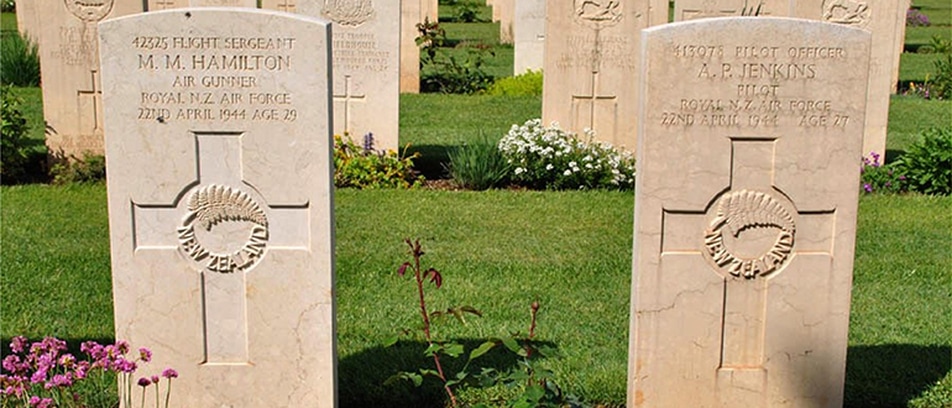


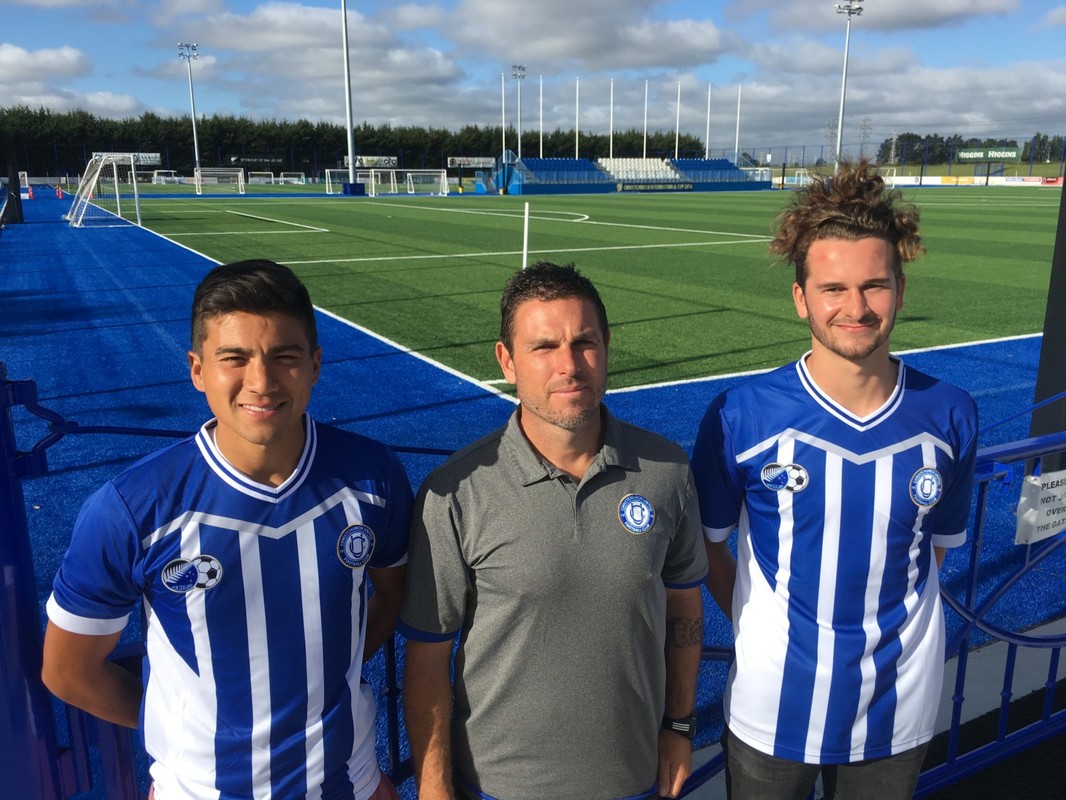


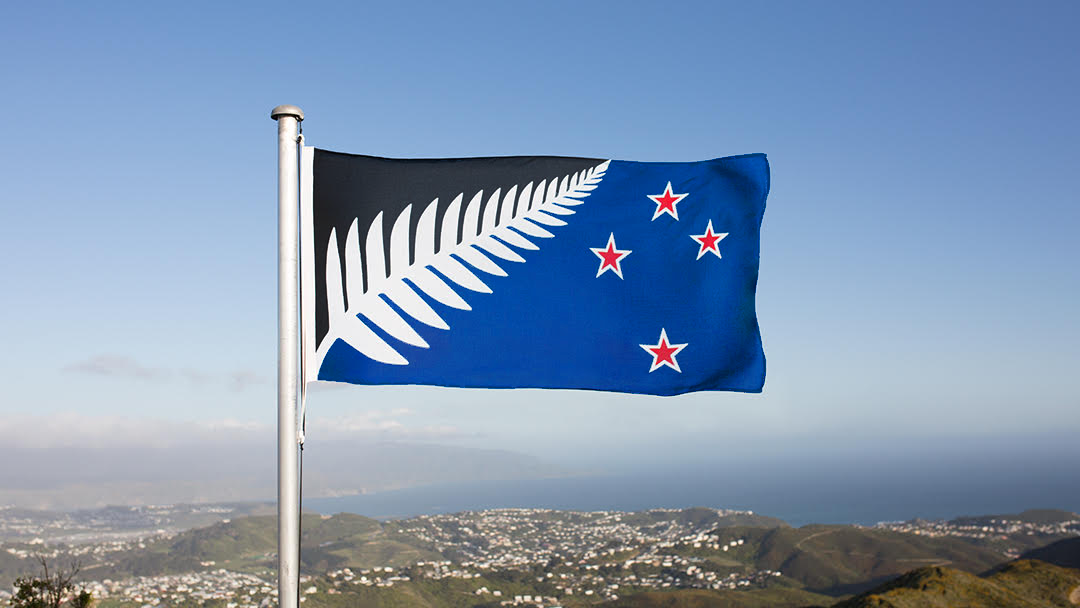
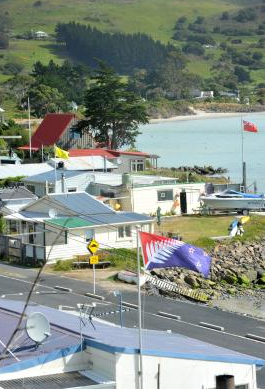

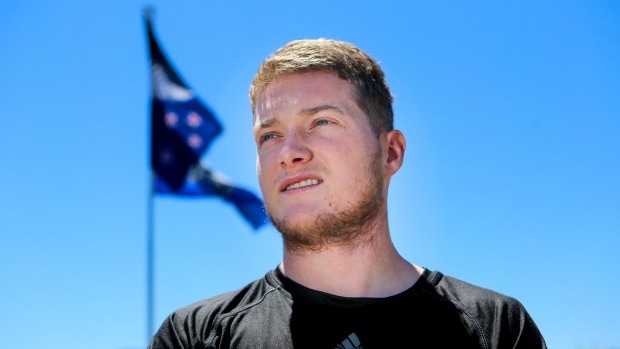
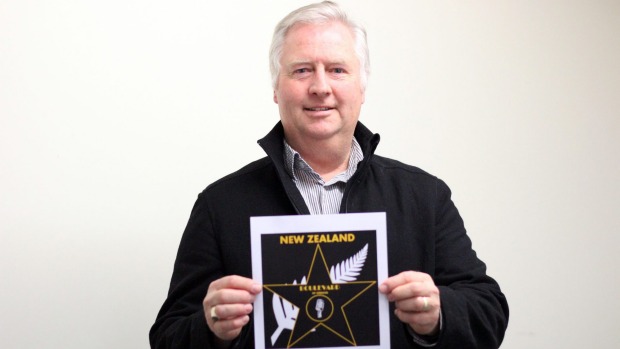















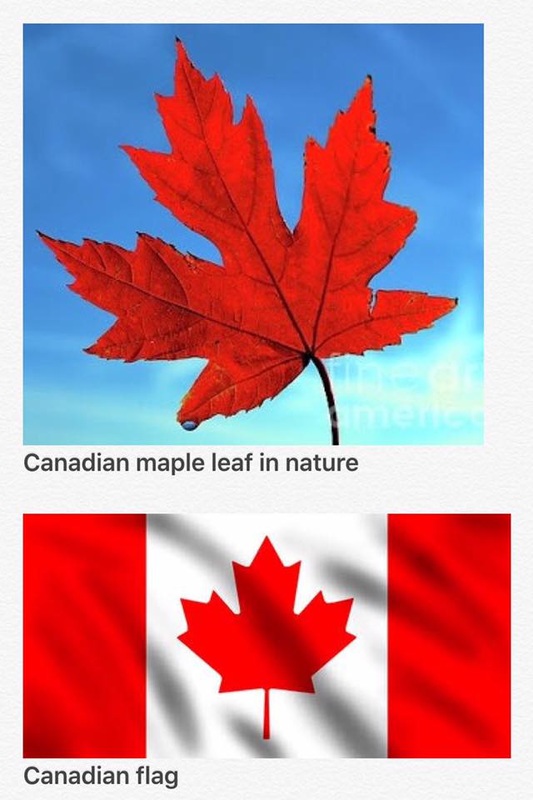




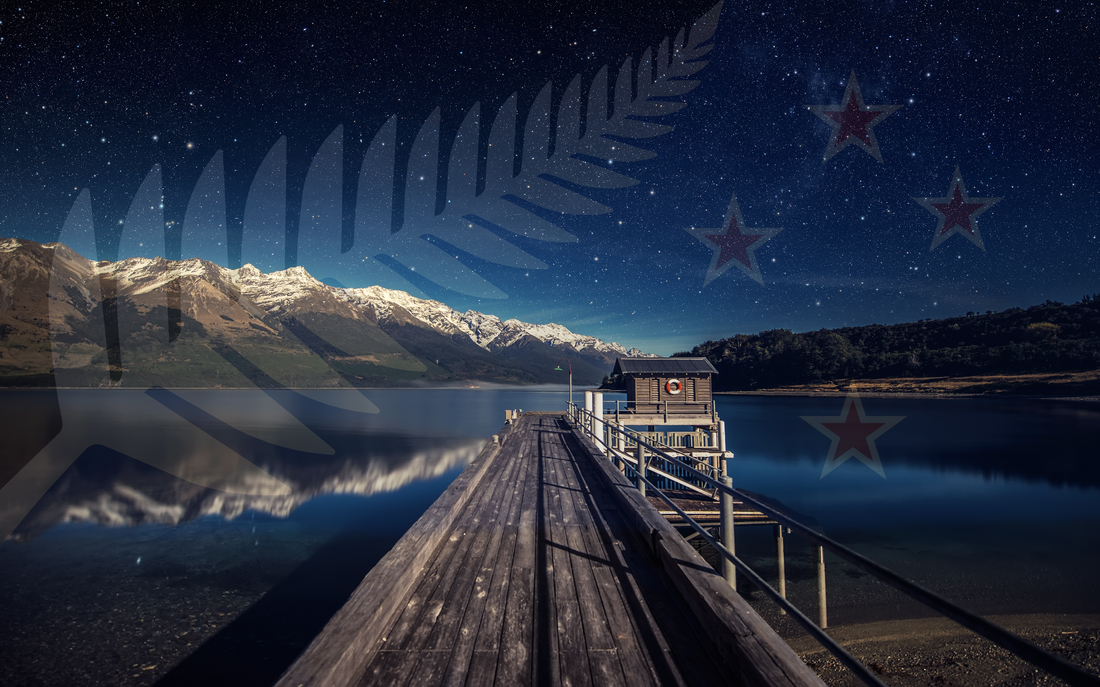

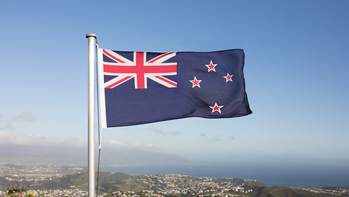

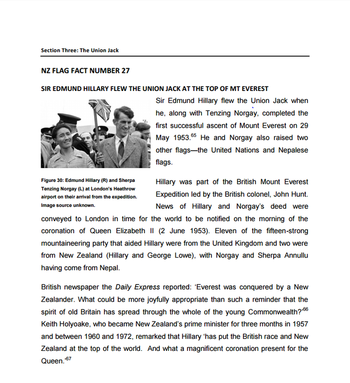


 RSS Feed
RSS Feed
